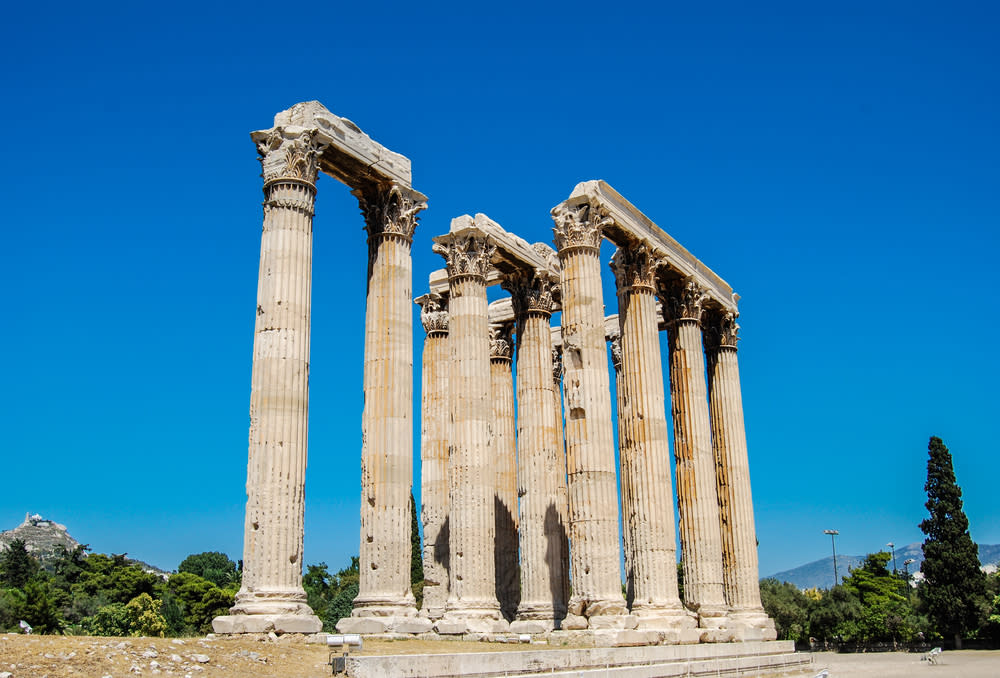More from Olympia
Main Menu
- 00:00
- 06:00
- 12:00
- 18:00
- 23:00
Olympia : Next 24-Hour Weather
Today - 24th December 2025
Sunrise 07:46
Sunset 17:20
Tomorrow - 25th December 2025
Sunrise 07:46
Sunset 17:20
Holiday Weather Now
Sorted by popularity:
Updated at 08:01 GMT
-
Temp feels like13°C55°F
-
Length of day09h 34m
-
Pressure29" (1015 hpa)
-
Visibility10 km (6miles)
-
Wind speed12 km/h
Sunrise 07:46
Sunset 17:20
-
Temp feels like:
13ºC (55 ºF)
-
Length of day:
09h 34m
-
Pressure:
29" (1015 hpa)
-
Visibility:
6 miles (10 km)
-
Wind speed:
12 km/h
Olympia sits in the west of the Peloponnesus peninsula of southernmost Greece. The city is inland from the Ionian Sea and has continental Mediterranean climate. Long, hot, dry summers are followed by short, mild winters. Rainfall is low and falls mainly in the winter. Summer drought conditions lead to an increased risk of wildfires. The climate is very similar to that of other areas of Greece, for instance Athens or Rethymnon on Crete. The city is a UNESCO world heritage site due to its invaluable archaeological remains dating back to prehistory. It was the birthplace of the Olympic Games.
Summer, from June till September, is characterised by baking hot temperatures and tireless sunshine. In July the sun shines for a full thirteen hours each day. The average high temperature is 28°C in June and September, peaking in July and August at 30°C. Rainfall is minimal; in some years it does not rain for weeks and drought conditions often prevail. The northern etesian, or meltemi, winds usually help to temper the heat, though when combined with the heat and water-starved foliage, they can be the catalyst needed to spread extensive wildfires. In the summer of 2007 extensive fires spread across the southern peninsula and threatened the ancient ruins of Olympia.
Autumn, in October and November, is one of the best times to visit Olympia though the very end of the season is less favourable. The average high temperature slides down to 23°C in October and 19°C in November. Until mid November, daytime temperatures in the low 20s are almost guaranteed; this is a much more comfortable level of heat in which to explore the fascinating ruins. However, night times are quite chilly from the start of the season, sunshine levels do decrease dramatically due to clouds and increased rainfall. Rain in this part of Greece falls in short thunderstorms.
Winter, from December till February, is mild in comparison to more northerly areas, but not hot by any means. The average high gets down to 14°C in January and February when the average low is 6°C. It can get down to freezing but snow is rare this low down. Up in the mountains snow falls quite heavily; ski resorts are common all over the Peloponnese Mountains. December is the wettest month and sunshine levels get down to around five hours per day.
Spring, from March till May, is increasingly pleasant; the end of the season is probably the best time to visit the city. Temperatures rise steadily and by mid April it often gets into the 20s. In May the average high temperature is 24°C. Night times remain cool but rainfall levels fall back to minute levels and the sun comes out for longer: six hours per day in March, eight in April and ten in May. While the ruins of Olympia are a popular tourist attraction whatever the weather, another good reason to visit in late spring or early autumn is to avoid the worst of the crowds.
Olympiaâs climate can be attributed to the sea, its southerly location and its proximity to the mountains. Northerly winds are drawn to the mountains and so much of the precipitation falls there rather than closer coast. The sea, though at a distance, still manages to temper the heat and cold that can be found rising and falling to greater extremes further inland. It should be noted that Olympia is in the Peloponnese Mountains, very far from Mount Olympus which sits in the north.

















